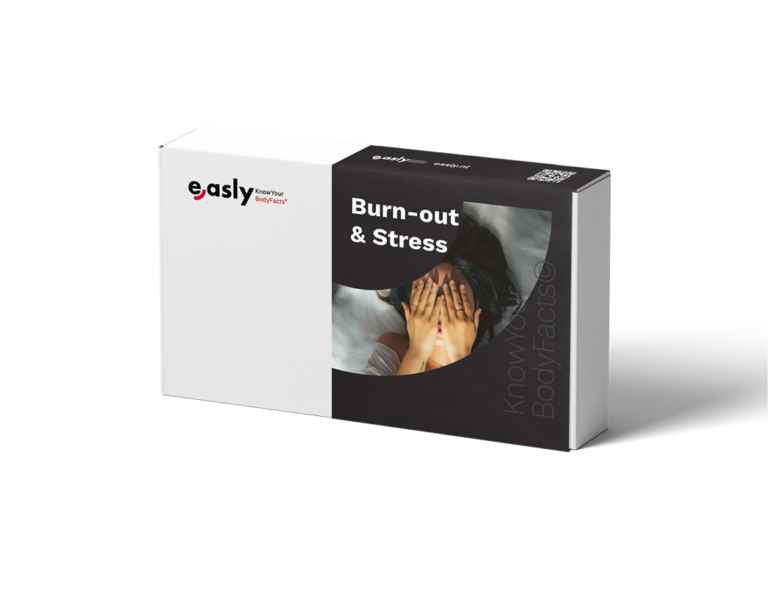Cortisol Meaning
Cortisol is a hormone produced in the adrenal glands. Cortisol is also called the
stress hormone, because under the influence of stress it is released by the adrenal glands
released into the blood and initiates all kinds of body processes that enable the body to
cope with this stress.
For example, cortisol promotes the production of glucose (sugar) and the breakdown of proteins to provide the
body cells the energy and building materials they need. Cortisol is released by the adrenal glands
released in a 24-hour rhythm, also called a circadian rhythm. This means that the
cortisol level is highest in the morning and lowest at night. When determining cortisol in
saliva, it is therefore also important that it is a saliva sample from the morning.
Abnormal values of cortisol can be caused by too much stress. Also
certain diseases can also cause abnormal values. In Cushing’s disease, too much
cortisol is produced. In Addison’s disease, the opposite happens; the adrenal glands
make too little cortisol. This can lead to very dangerous situations the moment the
body is in a stressful situation (for example, an infection). Caution! Oral
contraceptives (the pill) can give increased levels of cortisol.
Cortisol (saliva) Value
Cortisol in Saliva: Values and Interpretation
You can also find the cortisol values in saliva and their interpretation in tabular form below, so you can easily understand what the values say about your health.
- Normal: A cortisol level in saliva between 2.94 and 19.67 nmol/L is considered normal. This indicates a healthy hormonal balance. The cortisol value varies depending on the time of the day at which it is measured.
- Low: When the cortisol level is below 2.8 nmol/L, it is considered abnormal and too low. This may indicate impaired adrenal function or another hormonal abnormality. Values between 2.8 and 2.94 nmol/L are considered “elevated,” meaning the value is at the lower limit of normal. Further testing may be helpful.
- High: A cortisol value above 19.67 nmol/L is considered “elevated,” meaning it is at the upper limit of normal. Values between 19.67 and 20.7 nmol/L indicate increased adrenal activity, but are still within normal. If the value exceeds 20.7 nmol/L, it is considered abnormal and too high. This may indicate stress, an adrenal disorder or other underlying conditions. Further interpretation is needed in conjunction with other hormonal values.
- Invalid: A value of 0 nmol/L is considered invalid, possibly due to an error in the test or insufficient saliva material. A new measurement is recommended. The cortisol value in saliva is highly dependent on the time of measurement because the hormone follows a day-night rhythm and peaks in the morning.
Cortisol (saliva) Values and Interpretation (in table)
You can also find the cortisol values in saliva and their interpretation in tabular form below, so you can easily understand what the values say about your health.
| Result | Unit | Value min-max | Age | Gender | Biomarker interpretation |
|---|---|---|---|---|---|
| Not normal | nmol/L | 0 - 2,8 | 18 - 100 | Male & Female | The cortisol is outside the normal range and is too low. Cortisol levels depend on the time of measurement as they vary throughout the day. |
| Take care | nmol/L | 2,8 - 2,94 | 18 - 100 | Male & Female | The cortisol is still within the normal range, but is on the low side. |
| Normal | nmol/L | 2,94 - 19,67 | 18 - 100 | Male & Female | The cortisol is good. |
| Take care | nmol/L | 19,67 - 20,7 | 18 - 100 | Male & Female | The cortisol is still within the normal range, but is on the high side. |
| Not normal | nmol/L | 20,7 - 100 | 18 - 100 | Male & Female | The cortisol is outside the normal range and is too high. Cortisol levels depend on the time of measurement as they vary throughout the day |














